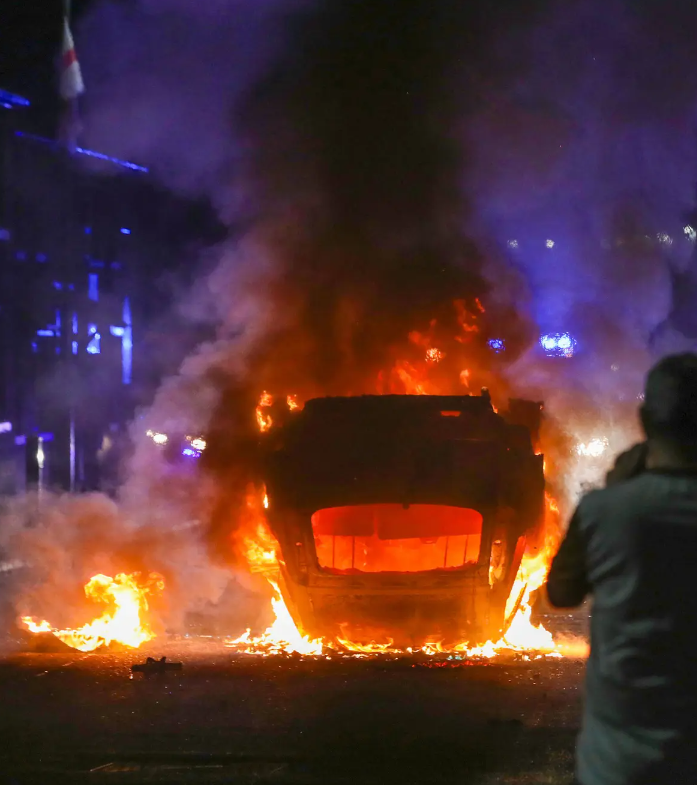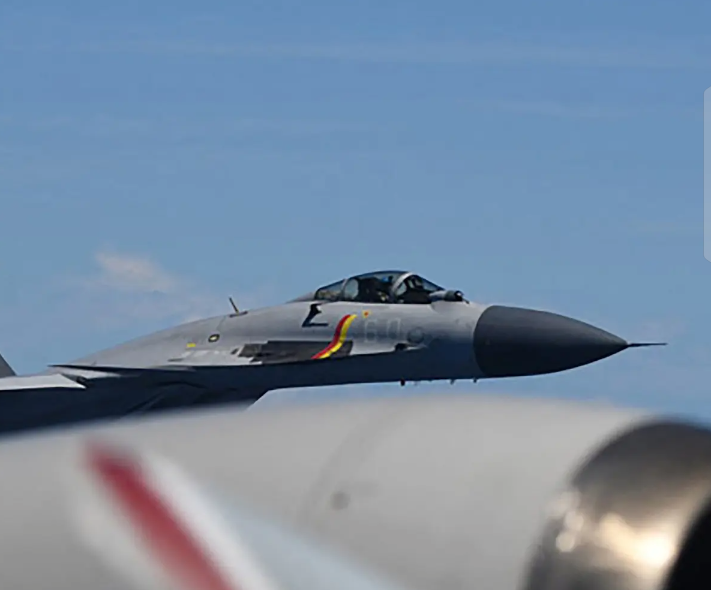
Flames of Hate: Northern Ireland Engulfed in Second Night of Anti-Immigrant Riots

Smoke curled into the night sky above Ballymena on Tuesday as flames consumed another vehicle and the anger of anti-immigrant rioters showed no sign of relenting. For the second consecutive evening, the town became the epicenter of unrest in Northern Ireland, with chaos spilling into surrounding areas as demonstrators, emboldened and unrestrained, brought violence to the doorsteps of homes, businesses, and local law enforcement.
The Clonavon Terrace area, already scorched and shaken from the first wave of violence on Monday night, saw renewed attacks with petrol bombs and bricks raining down on police officers who responded in force. What began as a protest over an alleged sexual assault involving a teenage girl — with rumors swirling on social media about the suspected assailant’s immigration status — quickly spiraled into what police are now calling “hate-fueled acts” that threaten to destabilize the region.
By late Tuesday, the Police Service of Northern Ireland confirmed that 17 officers had been injured in what they described as a “sustained attack,” with fireworks and improvised weapons hurled in a coordinated assault that spread beyond Ballymena to smaller pockets of unrest in surrounding towns. Vehicles were torched, storefronts shattered, and families reportedly fled their homes amid fears the violence could reach them next.
Videos shared widely across social media platforms showed masked individuals marching through the streets, chanting anti-immigrant slogans while others filmed blazing cars and shared celebratory messages online. A haunting image — an overturned car engulfed in flames, silhouetted by the glow of streetlights and smartphone screens — captured the surreal mixture of rage and spectacle that now defines the Ballymena riots.
Local leaders and community groups have called for calm, but their voices are struggling to rise above the clamor of digital misinformation and rising public tension. “There is no place for this kind of hatred in our community,” said a statement released by the Ballymena Borough Council. “We must let justice take its course and not allow rumor and fear to dictate our actions.”
But that appeal has found limited traction among a public on edge. A growing number of residents say they feel abandoned by political leaders, particularly amid delays in official statements addressing the incident that sparked the protests. Though the details surrounding the alleged assault remain unclear, the narrative taking hold on the streets is both simple and dangerous — that outsiders are to blame, and that violent retribution is justified.
Police have increased patrols across the region, deploying riot control units and calling in reinforcements from other parts of the country. Armored vehicles rolled through parts of Ballymena late into the night, attempting to disperse crowds while extinguishing fires that cropped up unpredictably. The smell of burning rubber and scorched timber lingered in the air well into the early hours of Wednesday morning.
The attacks have drawn comparisons to previous episodes of unrest in Northern Ireland, though the anti-immigrant tone of the current protests marks a shift from the historically sectarian lines of conflict in the region. Analysts warn that this emerging strain of xenophobic violence reflects a broader pattern seen across Europe, where populist sentiment and online radicalization have fed into increasingly aggressive acts against migrant communities.
“There is a real danger here that we are seeing the normalization of violence as a political tool,” said Professor Maeve Donnelly, a political scientist at Queen’s University Belfast. “The speed at which this moved from protest to coordinated riot is deeply concerning — and it’s being fueled in real time by online echo chambers that glorify this kind of behavior.”
The Northern Ireland Executive has scheduled an emergency session to address the crisis, with pressure mounting on political leaders to respond swiftly and decisively. Human rights organizations, meanwhile, are calling for an independent investigation into both the riots and the handling of the original assault case to ensure justice is served without scapegoating vulnerable communities.
Local immigrant advocacy groups are sounding the alarm about rising threats and targeted harassment. Several migrant families have reportedly left Ballymena temporarily, fearing for their safety, while others are considering relocation altogether. One Somali-born resident, who asked not to be named for fear of reprisal, described watching his neighbor’s car set on fire Tuesday night. “They shouted things in the street I couldn’t believe,” he said. “It’s not just about one incident. They want us gone.”
While arrests have been made, authorities have so far declined to release specific figures or details about the individuals involved, citing the ongoing nature of the investigation. Surveillance footage and social media posts are being reviewed, with digital forensics teams working around the clock to track the spread and coordination of the riots. Police say they are particularly interested in identifying those inciting violence online.
This latest eruption of unrest comes at a time when Northern Ireland is already grappling with economic hardship and political uncertainty following years of Brexit turbulence. Against that backdrop, tensions surrounding immigration — often stoked by far-right commentators and conspiracy theories — have simmered for months. In Ballymena, those tensions have now boiled over, and the consequences are being felt across the region.
As dawn broke over a shaken town, cleanup crews began the grim task of clearing debris from the streets while smoke curled from the last of the burned-out vehicles. Police in riot gear stood at the edges of scorched pavement, silent sentinels to the violence that had played out just hours earlier. The sense of shock was palpable, but so too was the fear that this was far from over.
Residents are bracing for another night of unrest as calls for peace clash with a rising undercurrent of anger and mistrust. With more protests rumored for the coming days and little clarity on when — or how — the violence might end, Ballymena stands at a crossroads. Whether it descends further into fear or finds its footing again will depend not just on law enforcement, but on whether its people can find a path back from the brink.


